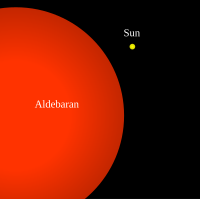Recently, I mentioned that Stokey had shared with the Allnatt Centre's staff his method of telling the time from the stars, which we had later put into practice on a clear, starry night.
If you want to have a go, here it is:
First, locate the constellation known as the Plough, Ursa Major or Big Dipper:
 The stars marked α and ß are Marak and Dubhe and can be used as a pointer to the brightest star in the sky, Polaris. Next, imagine a clock centred on Polaris, but upside down and back to front. Take the number the pointer shows (the Sky Hour) and double it (1 x 2 =2). Then take the month and double that (e.g. August is the 8th month so 16). Add the two together (18) and take that away from 41.5 = 23.5. So the time in this example would be 11.30pm!
The stars marked α and ß are Marak and Dubhe and can be used as a pointer to the brightest star in the sky, Polaris. Next, imagine a clock centred on Polaris, but upside down and back to front. Take the number the pointer shows (the Sky Hour) and double it (1 x 2 =2). Then take the month and double that (e.g. August is the 8th month so 16). Add the two together (18) and take that away from 41.5 = 23.5. So the time in this example would be 11.30pm!
Easy! Try it out next time there's a clear sky!
With spring in the air, the Allnatt Centre at East Dene in Bonchurch is gearing up for the new season. East Dene was once the home of the Romantic poet Algernon Swinburne but is now one of the Island's most popular outdoor education venues.
Every summer the centre welcomes school parties from the UK and abroad to enjoy a programme of education, play and inspiration in the peaceful coastal and woodland environment. This week the centre invited the new staff for East Dean and the sister centre at Swanage to train up for the season.
Last night's training focused on Reflection, a regular activity undertaken on the programmes, where youngsters reflect on themselves, their team and their achievements during their stay. Karen Chislett, East Dene's Head of Teaching, who attended Stokey's Solar System Walk launch event, said, "Many nights we finish with a bit of stargazing and I thought Stokey's Solar System presentation was really inspiring and knowing his knowledge on the night
sky, wanted to share this with the new staff to inspire them, as they too
expressed a wish to learn more and to pass this on to the students. Both centres
get great views of the night sky and students love hearing about our very
limited knowledge."

So Stokey once more delivered part of his Wonders Of The Universe course, bringing to life the distances of the Universe and the constellations of the night sky. After the presentation, the team moved up into the woodland, lit a fire and enjoyed putting their knowledge into action, spotting the planets and constellations visible in the clear, dark skies. We could see Orion, the planet Jupiter and Sirius, known as the Dog Star and the brightest star in the night sky.
Also visible was the orange giant star Aldebaran, the brightest star in the constellation of Taurus and so huge that our Sun appears tiny in comparison.
The team really enjoyed the evening and practised using their new-found way of telling the time by the stars....which I'll share in the next blog post!




